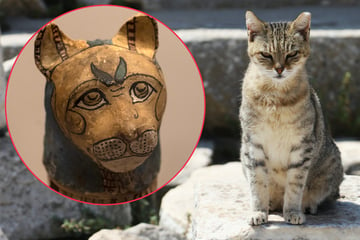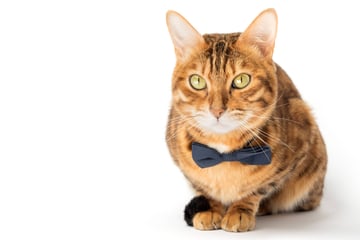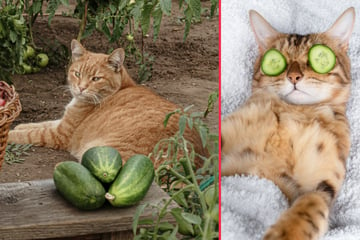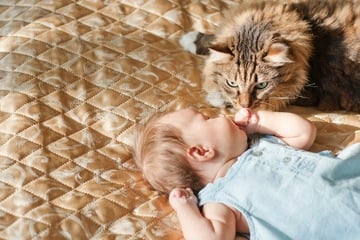Somali cat in profile: Origins, characteristics, price, and life expectancy
There are few cat breeds as striking as the Somali, with its big, fluffy fur and giant ears. What's its backstory, and what would it be like to adopt one of these elusive fluffy fellows? Find out in our Somali-in-profile.
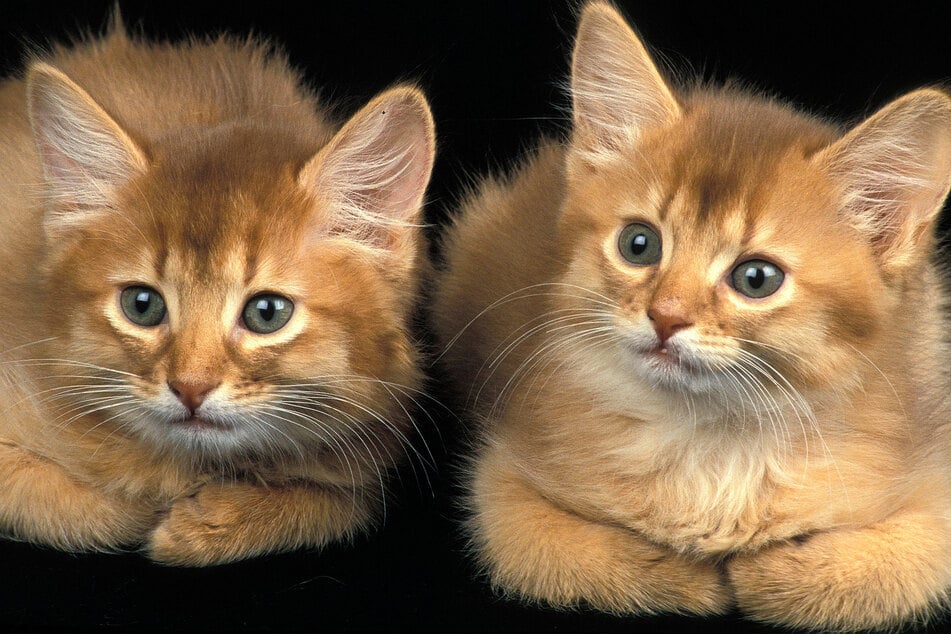
Sandy and gorgeous, the Somali cat is one of the most interesting and beautiful cats to have ever walked the face of the Earth. With massive ears and piercing eyes, a single glance from one of these kitties will send any human worth their salt into a tailspin of heartbreaking adoration.
In this cat guide and breed profile, TAG24 will dive into everything there is to know about the Somali cat. What is the origin of the Somali, what are its characteristics, how much will one cost, and how long will it live? Let's find out!
What is the Somali cat?
Somali cats are medium-large sized kitties that generally take on an orange hue and are closely related and very similar to the Abyssinian. What most well defines a Somali cat, ultimately, is its thick and big coat. This lends the creature much more volume, making it look larger and heavier than it really is.
These four-pawed fellows are strong, agile, and good-spirited creatures, and very happy to live alongside caring and careful humans who know what they're doing when it comes to cat ownership. They eat a lot, sleep a lot, play a lot, and love to be mischievous and a little bit naughty from time to time.
Ultimately, the Somali cat is a highly recognizable feline due to its character and characteristics. It's a big and energetic cat that makes a great addition to any household.
Somali cat origins and history
The Somali cat, often referred to as the Foxtail cat or the long-haired Abyssinian, doesn't actually originate from where its name may suggest. While "Somali" is the word given to people from Somalia, these huge cats actually originate from America, where they were first bred in the early 1950s.
These fluffy fellows are the direct descendants of Abyssinian's exported to Australia, New Zealand, Canada, and the USA in the 1940. These kitties were named after Ethiopia (formerly known as Abyssinia), though it is believed that they originated from south Asia, so it is ironic (and possibly not a coincidence) that the Somali cat is named after Ethiopia's eastern neighbor.
"Raby Chuffa of Selene" was the first known Somali cat to have ever appeared, and was born in 1953. It was assumed that its long hair was a trait that had remained dormant but was passed down through the generations. After all, this little kitten was not the result of breeding.
As more of these cats appeared, they began to be interbred until they became the famous specifies of domestic kitty that we all know and love today. They were recognized by authorities as an official breed in the USA in 1979, and in Europe in 1982.
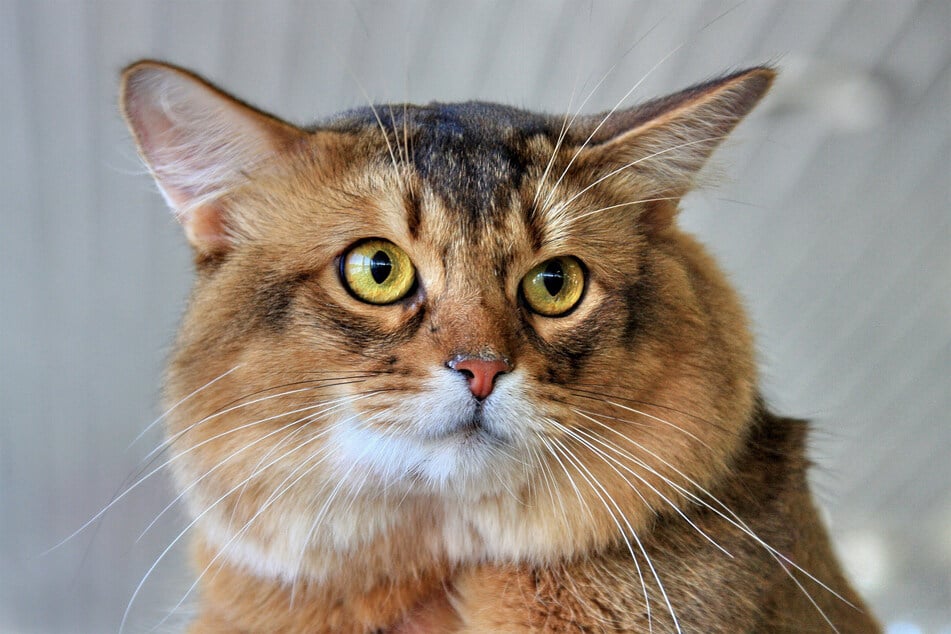
Somali cat characteristics
Your average Somali cat is a playful kitty that's good with other cats, kids, and most non-threatening humans. They are very intelligent but also quite hyperactive and high in energy at times, making it very important that you don't keep them locked up inside all day and all night.
They are relatively reliable and easy to train, as their high intelligence makes them particularly susceptible to positive reinforcement. These same smarts, however, also make them quite mischievous from time to time, creating a tendency towards naughtiness and even attention-seeking behavior.
These lively cats are likely to take as much food as they can, growing their long, dense, and silky coats out to as big as they can make them. As a result, they get a lot of fur balls and need constant brushing. Luckily, this brushing is made possible by a calmness that they possess which is quite unique in a kitty.
Altogether, Somalis are loving and affectionate pets that will make excellent additions to households and will always fend off a rat or two in support of the family. Show them love, and they'll love you back just as much!
Somali cat colors: Red, lilac, silver, blue, black, and more
Somali cats come in a vast assortment of different colors, though they are mostly famous for their red-orange look. This is possibly part of the reason for their name, as most Somalis are almost the color of sand. Their coats are stunning, and one of the biggest benefits of getting one of these kitties.
Here are a selection of colors you can find contained in a Somali cat's coat:
- Sandy / Brown / Gold
- Red
- Blue
- Black
- Silver
- White
- Brown
Like always, there are many different color combinations available in the Somali, so there's really no way of knowing where the possibilities end. Just look out for a look you find appealing and get adopting!
Somali cat size
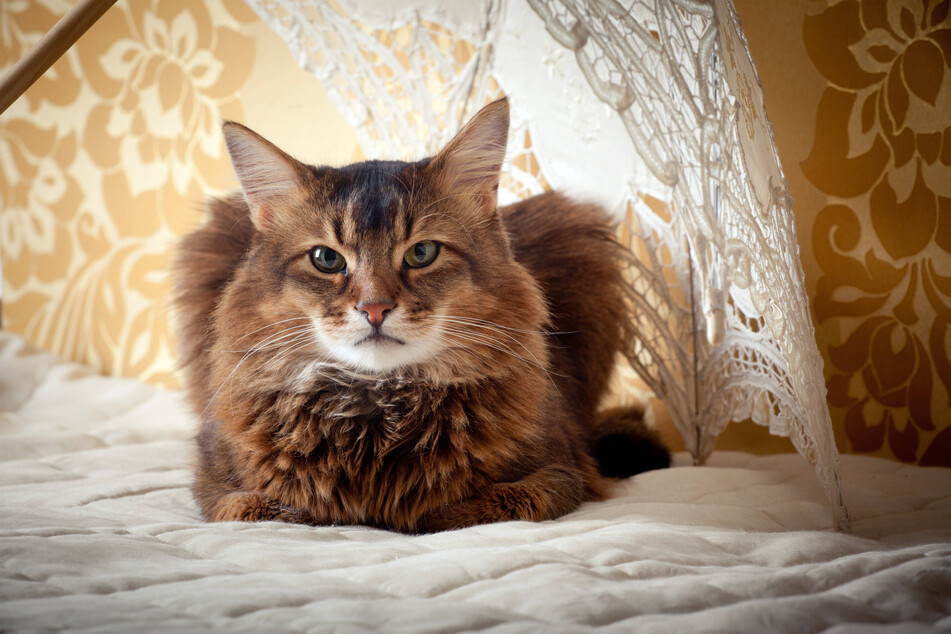
Somali cats are pretty chunky fellows and will usually weigh between 10–12 pounds on a good day. Many of them will likely get a bit heavier than that, as they can get very muscular and beefy as they get older and more experienced. A lot of the weight is also due to their fur, which is seriously bushy.
On top of being quite weighty, Somali cats usually stand 7–11 inches tall and are around the same length as your average kitty at around 12–16 inches. Their long, strong legs help them maintain their speed and heft as hunters, lending them a unique size and profile that makes them a particularly recognizable breed.
Somali cat life expectancy
Likely due to their pretty big size, Somali cats have a lower lifespan among kitties, at only about 11–16 years. Of course, this is largely dependent on factors unrelated to the breed itself, including diet, the amount of exercise they get, how stressful their environment is, and any health conditions that may rear their ugly head.
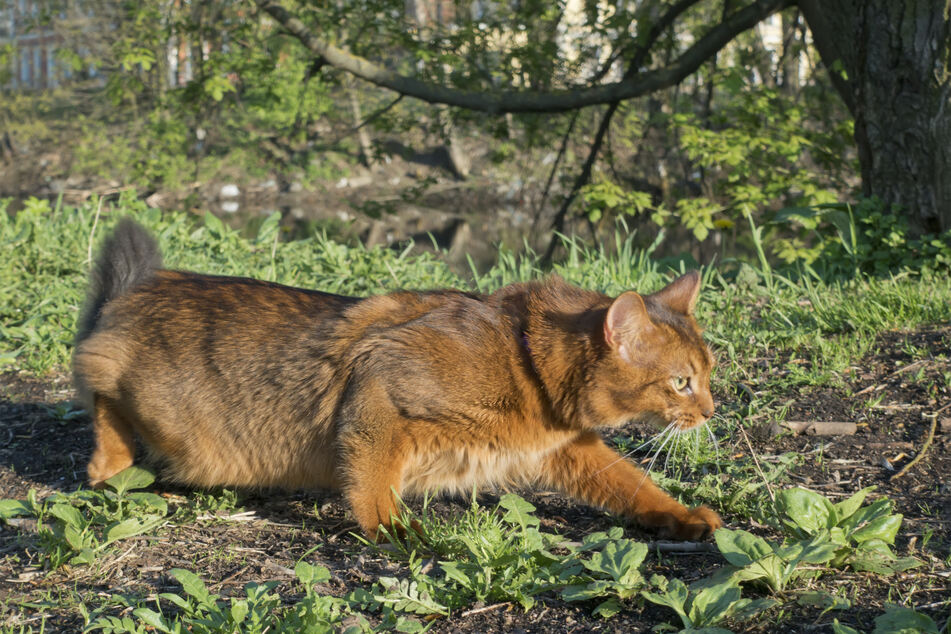
Somali cat price and adoption
Somali cats generally cost between $1,000 and $1,500, though the price will go up and down depending on the breeder or pet store you go with. It's best to go with reputable breeders when it comes to the Somali or Abyssinian as they are not particularly common, and you want a cat that is both a genuine Somali and a healthy, strong feline friend.
Ultimately, though, you shouldn't really choose your cat based on breed. It is far better to adopt from a shelter, as this gives abandoned cats a second lease on life, is better for the environment, is cheaper, and is a generally kind thing to do. Just keep in mind that, seeing as Somalis can be quite rare to find even today, you might have trouble adopting one except through a breeder.
It's about weighing up the options, and considering that it's not just a matter of dropping a grand. You're also going to need to pay for the cat's medical expenses, food, shelter, and toys. Pets are expensive – it's not just about the initial asking price.
The Somali cat is a fascinating kitty
Wonderful cats with an often great sense of humor and a playfulness that'll send your heart racing, the Somali cat is one of the best breeds of feline out there in the world. But that doesn't mean that they don't come with any drawbacks or challenges. Keep an eye on your Somali, if you choose to adopt one, as they can be extraordinarily naughty when left unattended.
These beautiful cats are not just lookers and performers, but fascinating in their own right, with a long origin story that's worth every moment of its telling. All in all, if you want a Somali cat, we applaud your decision!
Cover photo: imago/imagebroker
